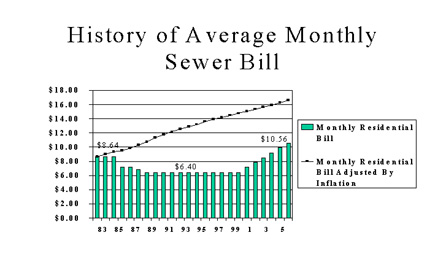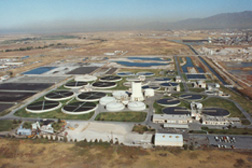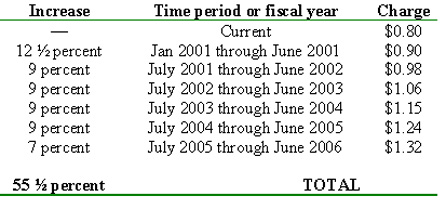Salt Lake City Department of Public Utilities
PROPOSED SEWER RATE RESTRUCTURING AND INCREASE
Facts and Customer Service Information
Introduction
|
|
Salt Lake City is restructuring its sewer rates to provide equity among the various classifications of users. In addition, the City needs to raise rates to construct capital improvements to collect, convey and treat wastewater in accordance with the requirements of the 1972 Clean Water Act. The Act established the National Pollution Discharge Elimination System (NPDES) program to control the discharge of pollution through implementation of water quality standards and National technology based standards requirements in a permitting system. Salt Lake City is required to meet the discharge limitations under its NPDES permit in accordance with the Clean Water Act.
Salt Lake City’s Wastewater Treatment Plant has an outstanding record of performance and NPDES permit compliance; however, the organic loading, as measured in terms of Biochemical oxygen demand (BOD), reaching the treatment plant is increasing to a point that the plant is near its treatment capacity. Additional capacity must be added to ensure that the treatment facility can continue to meet its NPDES permit limitations.
Salt Lake City’s sewer collection and conveyance systems are aging and in need of renovation. Salt Lake City has over 616 miles of sewer collection pipe of which over 50 percent is 75 years old or older. Under the proposed rate increase and capital improvement program, 0.6 percent of the sewer system will be rehabilitated or replaced each year for a 6 year period (20,000 feet per year).
Wastewater Treatment Plant Capacity
The Wastewater Treatment Plant was originally constructed in 1965. By 1981 the facility was hydraulically over loaded and in need of repair. Sewer rates were increased in 1981 to pay for the cost of renovation to the wastewater plant and sanitary sewer system.
During the past several years the waste strength has dramatically increased, requiring additional organic treatment capacity (see Figure 1).
Figure 1. Historic WWTP Flows and Loadings 1980 - 2000
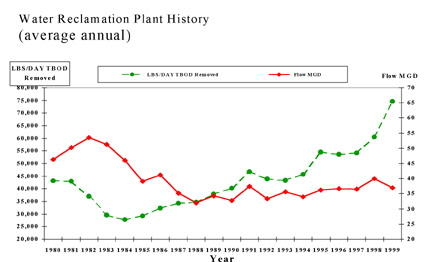 |
In the past five years, organic loading to the plant has doubled. If this trend continues, the plant will reach its capacity in approximately two years. The proposed sewer rate increase will fund needed improvements, encourage conservation and hopefully reduce the organic loading at the treatment plant. The proposed sewer rate change will fairly and equitably charge those customers discharging higher strength waste water to the wastewater treatment plant by having them pay the actual cost to treat the organic component of wastewater.
Aging Sewer Collection System
The collection system is aging. Over 50 percent of the sewer collection system is more than 75 years old (see figure 2). The sewer system operates in a very harsh environment, and it is necessary to keep the system in repair and replace aging facililities on an on-going basis. This will protect our system and minimize the number of pipe failures and sewage backups.
Figure 2. Sewer Collection System Age
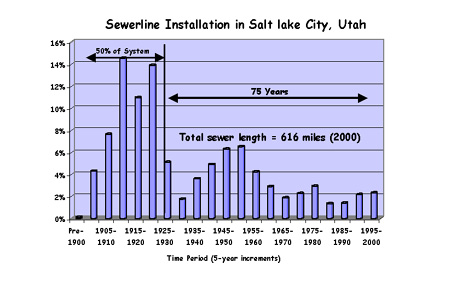 |
Proposed rate restructuring and increase
The proposed sewer rate has two components:
1. Additional funding for the capital improvement program (CIP) and
2. A special charge for different customer classes based on sewer "strength" as determined by tests for biochemical oxygen demand (BOD) and total suspended solids (TSS) and flow.
Sewer Rate Increases
The last sewer rate increase was in December 1982 -- 18 years ago. Over the time since 1982 sewer rates have actually decreased by 12 percent. The proposed sewer rate increase will affect all customers. The sewer rates will be increased beginning in January 1, 2001 and have the following annual increases:
Figure 3. Proposed Rate Increase Schedule
|
|
These increases will fund needed capital improvements. The improvements will be funded by 50 percent debt financing and 50 percent by rates. The following is the six-year capital improvements plan.
Figure 4. 6-year Capital Improvement Projects
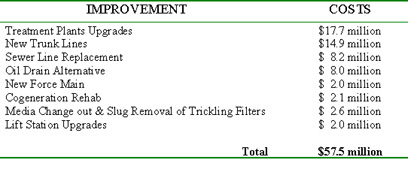 |
Organic Loading Charges
The second part of the sewer rate charges is to divide our customers into seven classes based on the wastewater strength which they contribute to the wastewater treatment plant. All customers will be classified according to the strength of their waste discharged into the sanitary sewer. The initial classification of each business is based on information as measured by other communities that use the same type of rate structure. The Department of Public Utilities is currently writing an appeals process. Commercial and industrial customers who can demonstrate they discharge a lower strength discharge will be reclassified to a lower rate.
The following table represents typical sewer rate charges per 100 cubic feet of average winter water use for a variety of customer types:
Figure 5. Proposed Rates for Different Dischargers
 |
Residential customers can help reduce the total loading at the Wastewater Treatment Plant.
Residential customers will not see a rate increase based on organic strength. Only those commercial and industrial customers who produce higher strength waste discharges will be affected. However, even though residential customers discharge domestic waste, they can help reduce the total loading at the wastewater treatment plant by not disposing of kitchen food waste and grease in the sink drain. Please scrape food from cooking utensils and dishes into the garbage can instead of the sink. Don’t dispose of waste by using the kitchen grinder. Store and cool cooking grease in a container before disposing of it in the garbage can. If everyone reduced their use of the sanitary sewer to dispose of kitchen waste, the need to construct new wastewater treatment facilities could be minimized or deferred at an enormous cost savings. You can help us meet our environmental obligation and keep costs down in the future.
Figure 6. Residential Customer Sewer Charges
